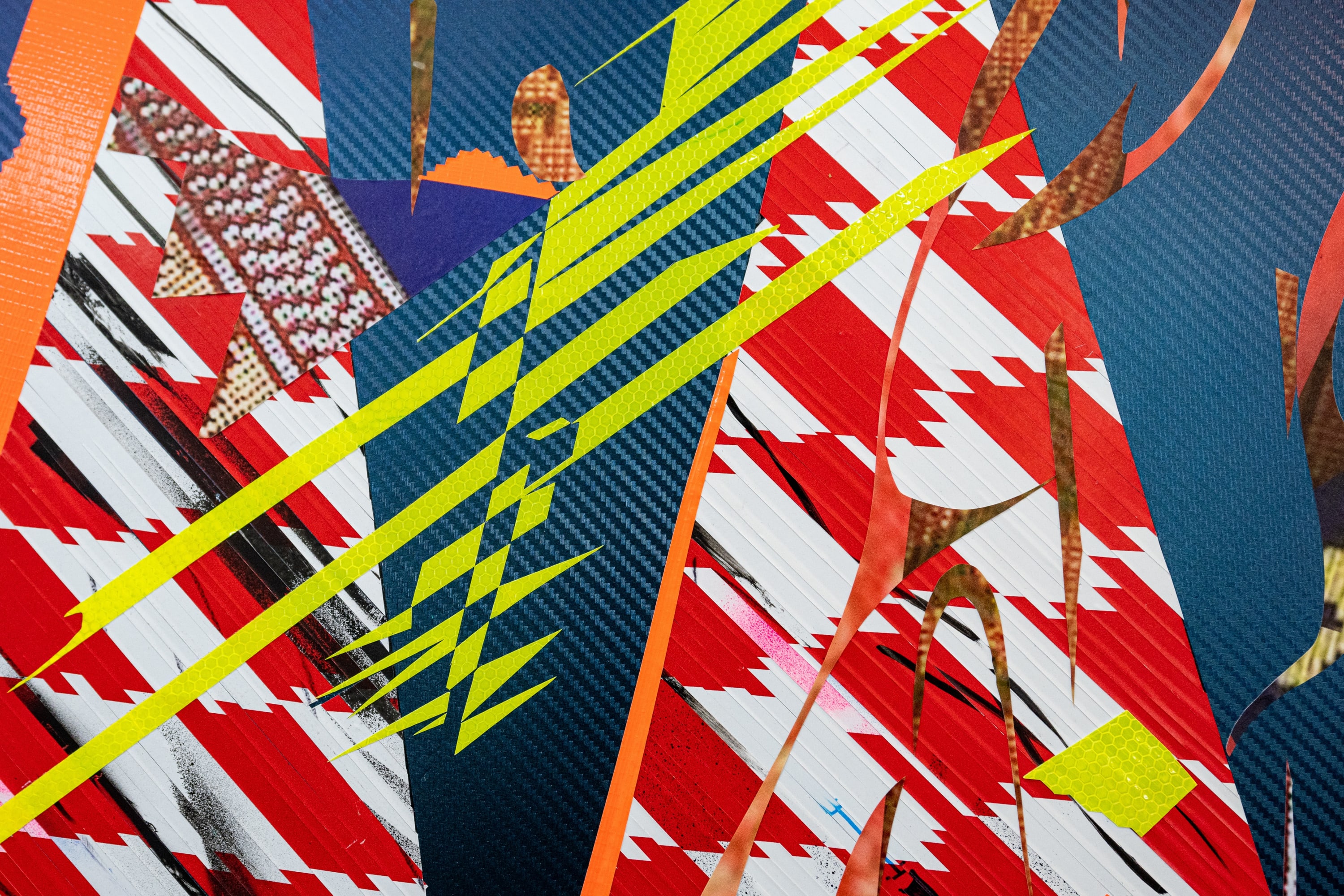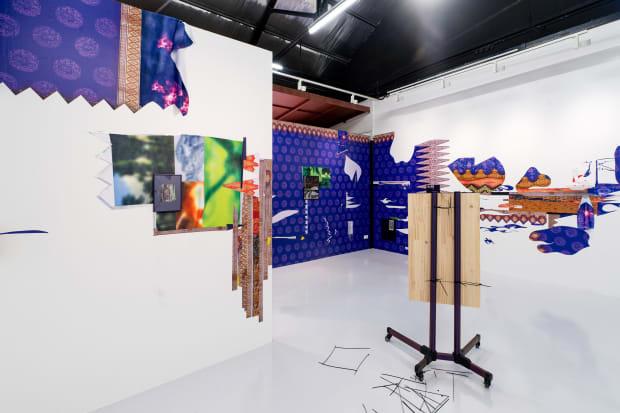-
Welcome to the Nusantaran space age, where ultra lightweight flexible polycarbonate compounds become the perfect medium for the natural fusion of modernist forms and Southeast Asian visual vocabulary, both concrete and abstracted. The materials of custom auto culture, industrial safety, manufacturing, and image-saturated mobile marketing – vinyl wraps, carbon fibre – are themselves reliant upon sophisticated and ultra-regularized geometry. These slick surfaces become pathways to troubling the pristine grids and cubes of contemporary art practice with an expansive and ongoing series. Adrift in a field of songket dating to the Srivijaya Empire or Malacca and Johor Sultanates, calligraphic flames flicker. In some places, these zips of color and form seem like small bolts of destructive lighting; in other places, jagged jolts of minor electrical interference; and in others, the elegant, precise, and lethal movements of expertly-wielded kris blades. The picture plane is also home to an encroaching red and white checkerboard-like pattern, resembling an optical descendant of houndstooth. A classic jagged houndstooth pattern is itself evidence of the warp-weighted loom as a concurrent and adjacent technical marvel developed alongside metal alloys in the Bronze Age. In this de-regularize form, the checks and stripes ebb and flow. This instigation to devolution is the intentional replacement of mass production’s simple predictability with wildly glitched syncopation.
While these works are in tense conversation with both modernist easel paintings and the screens of broadcast media and the information age, they do not antagonize either lineage or history. Fueled by a future-facing positivity, this project captures the idealism of postwar Asia’s techno-military-industrial recovery while fully acknowledging the darker side and human cost to progress. A painter by training with a significant practice in sound, video, and new media, Fyerool Darma’s recent focus on weaving and collaged vinyl compositions is only a slight shift to the realm of craft and manual labor, but a major leap toward game-like world-making. In the early twentieth century, Marcel Duchamp praised plumbing and bridges as the most important American contributions to art, adopting the readymade as a way to honor the brilliance of engineering and precipitating an art world shift away from seeing only unique handmade objects as masterworks. Fyerool places the postcolonial body, and histories of exploitation and exhibition, into this modernist paradigm. The result is a reconstitution of the readymade as not the product itself, but a prime means of repopulating the realm of painting in a post-industrial, polymeric age. -
 Fyerool Darma, (Detail) Screenshot 02-07-2022 at 12:30 AM (kaw454kti) featuring moyang, Lee Khee San (2022)
Fyerool Darma, (Detail) Screenshot 02-07-2022 at 12:30 AM (kaw454kti) featuring moyang, Lee Khee San (2022) -
-
 Fyerool Darma, Screenshot 21-06-2022 at 02:40 AM (SabanaHoneymoon-30°|39° with view of Gertie) featuring @budyoung and Lee Khee San (2022). 121 x 68 x 3 cm.
Fyerool Darma, Screenshot 21-06-2022 at 02:40 AM (SabanaHoneymoon-30°|39° with view of Gertie) featuring @budyoung and Lee Khee San (2022). 121 x 68 x 3 cm. -
KARIN G. OEN is a curator and art historian based in Singapore where she is Senior Lecturer and Head of Art History at NTU School of Humanities. She received her PhD in the History, Theory, and Criticism of Art and Architecture from MIT.
Facture of the Anti-Grid, in Glitched Syncopation: Text by Karin G. Oen, PhD
Past viewing_room







